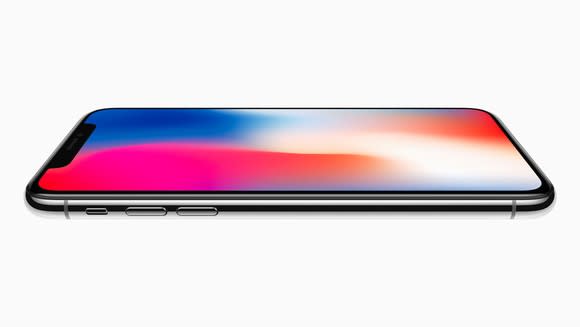1 Way Apple Inc.'s Next iPhone Could Be a Whole Lot Speedier
KGI Securities analyst Ming-Chi Kuo says the iPhones that Apple (NASDAQ: AAPL) plans to release next year will include improvements in the design of the casing that'll improve the phone's ability to receive and transmit cellular signals.
Kuo explains that the metal frame of this year's iPhone X is made up of four parts. Next year's iPhone models will have metal frames with "more parts," which the analyst claims will enhance "data transmission quality."

Image source: Apple.
The increased complexity of the metal frames of next year's iPhones, Kuo explains, will require that Apple's case-manufacturing partners bring more manufacturing capacity online.
Let's take a closer look at what this'll mean for Apple's business.
Increased complexity means higher manufacturing costs
On Apple's most recent earnings call, CFO Luca Maestri was frank in stating that with each new iPhone generation, the company's device manufacturing costs go up.
"It's inevitable," Maestri said. "We are adding new technologies, new features, and therefore the cost structures go up."
It's not hard to find examples of what Maestri is referring to. In the iPhone X, for example, Apple moved from tried-and-true liquid crystal displays to more advanced organic light-emitting diode (OLED) displays.

Image source: Apple.
Not only are such displays harder to manufacture, but Apple can only source them from arch-rival Samsung (NASDAQOTH: SSNLF), since Samsung is believed to be the only company capable of producing OLED displays in both the volumes and quality levels Apple needs.
Unfortunately for Apple, having just a single supplier for such a critical component means its bargaining power with that supplier isn't particularly strong.
Another obvious example is the inclusion of the TrueDepth camera system in the iPhone X, which enables features like Face ID and face tracking. This system is made up of multiple components, including an infrared camera, flood illuminator, and dot projector -- all components that weren't present on previous-generation iPhones.
The more complex metal frames that'll reportedly be used in next year's iPhones are likely to be more expensive than the ones used in this year's iPhone X, and I doubt that this will be the only place in next year's iPhone lineup where costs will increase.
The good news, Maestri says, is that Apple has a "very good track record" of reducing those cost structures as production progresses on its products, so I expect the same will hold true for next year's iPhones.
Why make the improvement?
Next year, Apple is likely to build gigabit LTE capabilities into its new iPhone models, and it wouldn't surprise me to see the company aggressively market that capability as well. Apple may need to redesign the metal frames for its upcoming iPhones so that the phones can take advantage of the improved cellular capabilities the company will build into them.
In some sense, Apple has no choice but to continue to advance the wireless capabilities of its iPhones: The smartphone market is highly competitive, Apple's competitors have already adopted the latest cellular technologies, and they'll continue to do so.
This year, Apple can get away with not having gigabit LTE capability built into its iPhones because of the magnitude of the improvements it delivered elsewhere with the new iPhone X. However, since Apple is unlikely to offer many, if any, obvious form-factor changes with next year's iPhones, it'll need to lean more on technology specifications and capability improvements to successfully market the devices.
More From The Motley Fool
6 Years Later, 6 Charts That Show How Far Apple, Inc. Has Come Since Steve Jobs' Passing
Why You're Smart to Buy Shopify Inc. (US) -- Despite Citron's Report
Ashraf Eassa has no position in any of the stocks mentioned. The Motley Fool owns shares of and recommends Apple. The Motley Fool has the following options: long January 2020 $150 calls on Apple and short January 2020 $155 calls on Apple. The Motley Fool has a disclosure policy.
